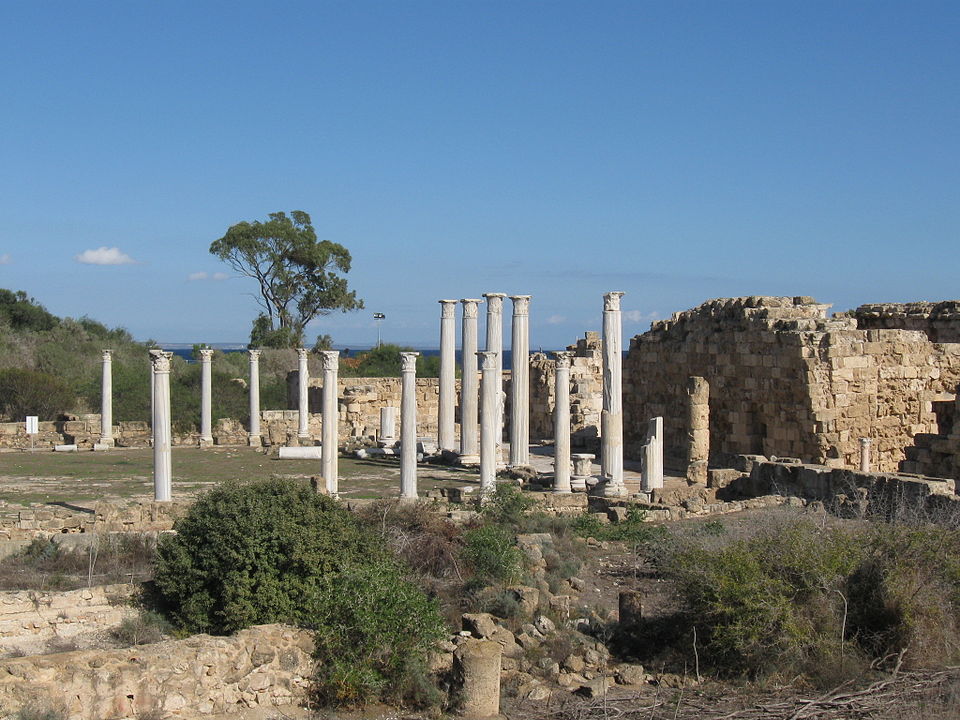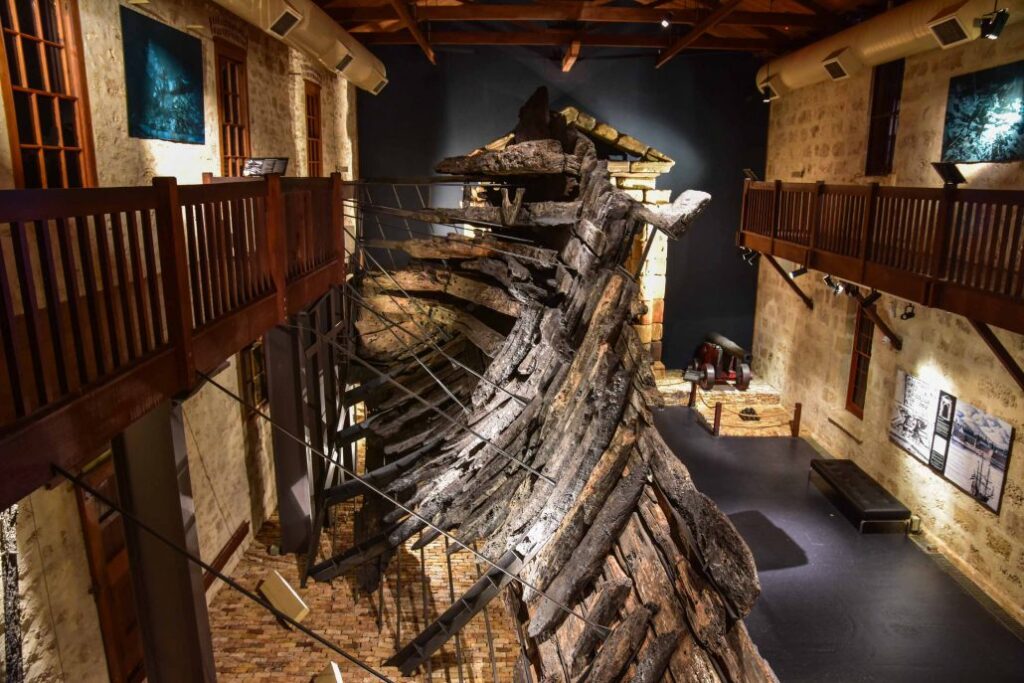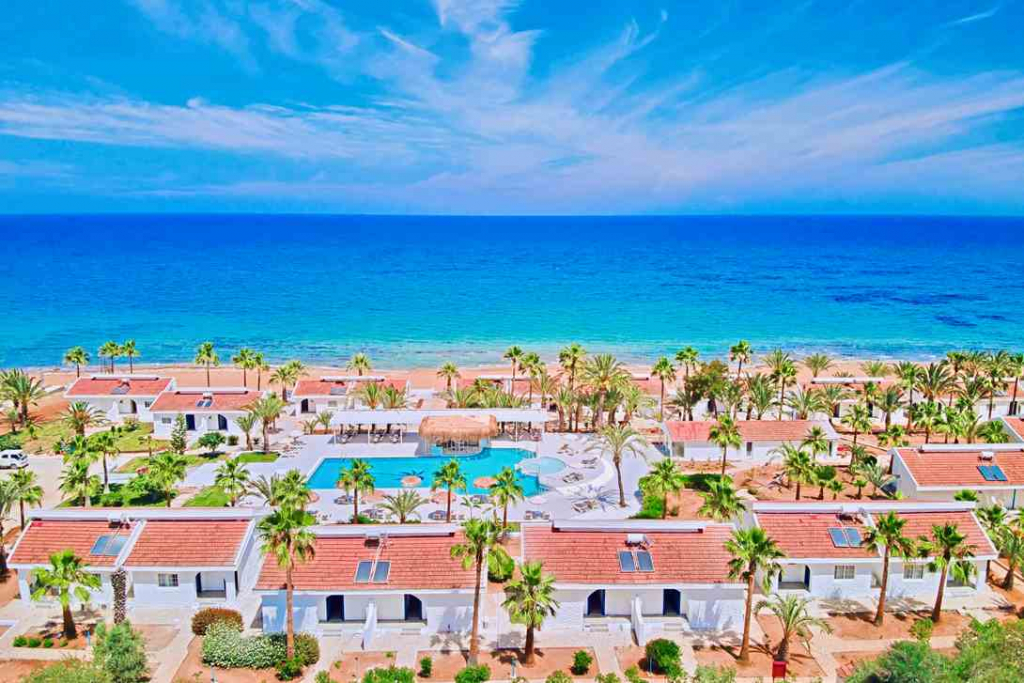Important historical and cultural places await you. Learn about the places you must see when you come to Northern Cyprus.
The Ancient City of Salamis

Dating back to the 11th century B.C., the ancient city of Salamis was founded by Tefkros in the north of Famagusta during the Bronze Age. The ancient city of Salamis was discovered during excavations between 1952-1974 and should be on the top of your list of places to visit in North Cyprus. Ruins of the gymnasium, bath, forum, and agora from the Roman Period can still be seen.
Kyrenia Harbour

Kyrenia grabs the attention of visitors thanks to the ancient harbour and castle right next to one another. Kyrenia Harbor, built in the shape of a horseshoe, is situated in the city centre and is one of the most popular places to visit in Kyrenia. The yachts and colourful fishing boats in the harbour create a picturesque sight for locals and tourists alike. The restaurants and bars along and around the harbour were, in fact, carob warehouses from the Venetian period.
Kyrenia Castle

Kyrenia Castle, right next to Kyrenia Harbor, combines various architectural styles. Behind the Venetian walls of the Castle, you will find St. George’s Church, royal quarters, a Byzantine Chapel, and French dungeons. Rescued from the seabed, the ship found in the Ancient Shipwreck Museum is thought to be the oldest shipwreck dating back to around 389 BC.
The Shipwreck Museum

The Shipwreck Museum within Kyrenia Castle hosts a cargo ship that sank near Kyrenia dating back to around 389 BC. Discovered by a local diver at 30 meters below sea level in 1965, the shipwreck was excavated by marine archaeologists from the University of Pennsylvania between 1967 and 1969.
Bellapais Monastery

The medieval Bellapais Monastery sits on the skirts of the Beşparmak Mountains to the east of Kyrenia, fascinating tourists and locals with its unique gothic architecture and astonishing views. Another tourist attraction is the house of Lawrence Durrell who lived next to the monastery in Bellapais between 1953-1956 and expressed his admiration for the monastery in his book “Bitter Lemons”, which he wrote while living there.
Saint Hilarion Castle

One of the three castles in the Beşparmak Mountains, St. Hilarion Castle is located at an altitude of 700 m above sea level. The monastery and church, named after a saint who migrated from Jerusalem to Cyprus in the 10th century to spend his final years worshipping here, was later added to the castle. Rumour has it that the famous castle in Walt Disney’s “Snow White and the Seven Dwarfs” was inspired by St. Hilarion Castle.
The Great Inn

Built between 1572 and 1579, inspired by the Koza Inn in Bursa with a square plan and two floors, The Great Inn is perhaps the most important structures not only of Nicosia but Ottoman architecture. 68 rooms on the ground floor were used as shops while rooms on the top floor were used as hotel rooms. Now, it is a cultural hub where handicrafts and souvenirs are sold.
Karpaz Peninsula and Apostolos Andreas Monastery

Karpaz Peninsula, or ‘the panhandle’ as called by the British, in the northeast of Cyprus is a place where time stands still. Karpaz is just as famous for its unique nature as it is for its wild donkeys. Its beaches stretch on for kilometres. At the very tip of the peninsula is Apostolos Andreas Monastery, dedicated to the miracle worker St. Andrew. Ancient cities, basilicas, ruins, tombs, and many more historic landmarks are waiting to be discovered.
The Blue Mansion

Blue Mansion was built by the eccentric Greek Cypriot entrepreneur Byron Pavlides in 1973. It is a two-storey villa consisting of 16 rooms with traces of Greek, Italian, Turkish and Eastern Mediterranean architectural features. Built using the most advanced technology of its time, the villa has 2 hidden tunnels leading from the house to underground shelters. While majestic and beautiful in its own right, the myths and legends of the mansion are what truly make it a magical place.
The Walled City (Suriçi) of Famagusta

Now in use as Lala Mustafa Pasha Mosque, St. Nicholas Cathedral is another popular tourist attraction. You can walk through history along the thick and heavy Venetian walls of Suriçi, especially in parts close to the sea surrounding the Sea Gate. Nearby, you can find St. Mark’s lion statue and Othello Castle which owes its name to Shakespeare. Shops, cafes, and restaurants within the walls welcome guests in streets closed-off to traffic.
Kantara Castle

Located in the far east of the Kyrenia Mountains, Kantara Castle strategically sits 700m above sea level overlooking the northern coastline, Mesarya Plain, and Karpaz Peninsula. Despite the loss of the upper floors a century ago, the guardhouse on the lower floors, the Castellan’s quarters, barracks, stock rooms on the west side of the castle, and the deep cisterns are still standing. For exquisite sites at every corner, follow the outer walls to discover more ruins and breathtaking views. According to legend, the lucky person to discover the 101st room in the Kantara Castle, which is said to consist of 101 rooms, will go to heaven. With long narrow slits in its walls where archers would shoot arrows at the enemy, the Northeast Tower is a section of the Castle you should not miss.
St. Barnabas Monastery

Built in 477 by Byzantine emperor Zeno, St. Barnabas Monastery can be found near Tuzla Village in Famagusta along with his tomb at the western end of the Salamis Necropolis, near the Royal Tombs. Barnabas, who lived in ancient Salamis in 45 A.D., spread the gospel of the Bible throughout Cyprus, especially around Salamis.
Destroyed by attacks 2 centuries after it was built, only the foundation of St. Barnabas Monastery has survived. The renovated St. Barnabas Monastery dates back to 1750 and consists of 2 museums; the Icon Museum and the Archeology Museum. The Archeology Museum exhibits ancient hand-made artefacts unearthed at Salamis. The Icon Museum exhibits various icons collected from churches from the 18th century in Famagusta, including icons already present in St. Barnabas Monastery.
Namık Kemal Dungeon

Namık Kemal Dungeon, where the playwright and poet Namık Kemal spent 38 months in exile for a play in which he criticized the Ottoman sultans, is located in the courtyard of the Venetian Palace in the Walled City of Famagusta. On the ground floor of the stone dungeon, there is a door opening to the courtyard of the palace and a small window with iron bars. Documents belonging to Namık Kemal are exhibited on the upper floor of the dungeon, which has only two windows and can be accessed by a steep stone staircase.
Vouni Palace and Ruins

9km west of Gemikonağı and 250m above sea level, Vuni Palace sits on a high hill east of the ancient city of Soli. Built in 500 BC to gain control over Soli, the palace has a total of 137 rooms lined up on three sides of the central courtyard. It was home to the people of Soli until it was destroyed in a fire in 380 BC. The atrium, living quarters, collonaded courtyard, kitchen courtyard, cistern, granaries, bathrooms, living rooms, and offices of Vuni Palace have all stood the test of time.
Güzelyurt Museum of Archaeology and Natural History

Right next to Saint Mamas Monastery, the museum is located in the old palace of the Bishop of Güzelyurt. On the ground floor, you can find displays of natural history such as geological samples, taxidermies of fish, mammals and birds endemic to Cyprus. On the upper floor, there is a section on archaeology from the Neolithic and Bronze Ages. There are also artefacts from the settlement of Tumba Tou Skuru in the second and third rooms.
Golden Beach

Golden Beach, one of the most immaculate beaches of the Mediterranean with its bright blue sea and golden shores extending 2 km along the Karpas Peninsula, offers visitors the chance to lie down, go for a long walk on the beach, and cool off in the clear blue waters.
Long Beach

Located between Famagusta and Boğaz Village and just a 10-minute drive to Famagusta, Long Beach stretches 3km long. Thanks to its luxurious coastline, golden sand, and clear waters, it is one of the most popular beaches in North Cyprus. Recently, it has been transformed into a recreational paradise with the addition of walking and bicycle paths, playgrounds, and outdoor sports equipment for adults. Windsurfing, paragliding, and scuba diving are some other activities people frequently enjoy here.
Glapsides Beach

Glapsides Beach, a public beach extending for kilometres along the coastline in Famagusta, offers crystal-clear waters and a white sandy beach. It is ideal for children due to its shallow and calm sea. There are sunbeds, jet skis, and pedal boats to rent as well as showers and a restaurant

